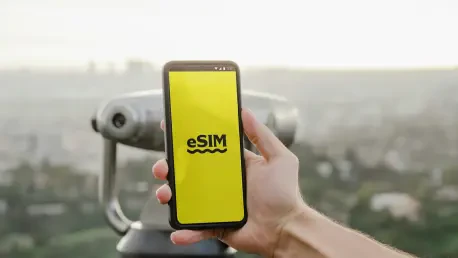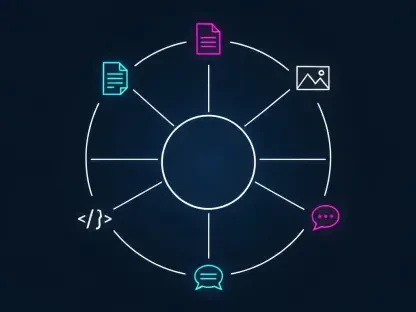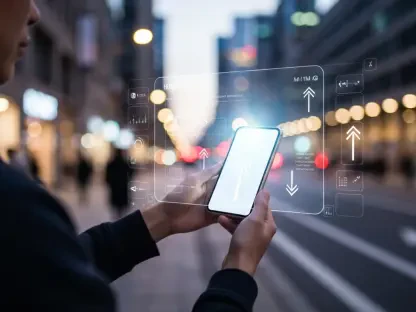Oscar Vail is a well-respected expert in the technology arena, known for his deep dives into emerging fields like quantum computing and robotics. With his pulse on the latest advancements, he provides valuable insights into the industry’s direction. Today, Oscar shares his thoughts on potential innovations in mobile technology, particularly Apple’s steps towards easing cross-platform transitions with eSIM transfers.
What is an eSIM, and why has it been a headache for users switching between iPhone and Android devices?
An eSIM, or embedded SIM, is essentially a digital SIM card that eliminates the need for a physical one. While it simplifies the switching process between devices to some extent, the inconvenience often arises when transitioning between platforms like iPhone and Android. The headache primarily stems from having to contact the carrier for a new activation QR code, which disrupts the immediacy often expected by users when they switch devices.
How does the typical process of transferring an eSIM currently work when changing from an iPhone to an Android device? What challenges do users face with carriers when transferring an eSIM?
Currently, transferring an eSIM between platforms is far from seamless. Users often have to initiate a conversation with their carrier, request a new QR code, and grapple with the potential delays this introduces. The challenges are particularly evident in cases where carriers may not be fully equipped to manage cross-platform transitions efficiently, resulting in a patchy experience that discourages users from switching.
What new feature might iOS 19 introduce to simplify eSIM transfers to Android phones?
Reports suggest that iOS 19 might introduce a direct eSIM transfer feature that would allow users to bypass the traditional carrier involvement. Instead, the transfer would be managed within the iPhone settings, offering a streamlined option like “Transfer to Android,” potentially making the switch less cumbersome and more intuitive.
How might the new transfer process work according to the reports? What steps would users have to take on their iPhone to initiate this transfer?
The process may involve simply accessing the phone’s settings under a new menu option that facilitates the transfer to an Android device. Key actions could include scanning a QR code or utilizing a wireless method with a session ID and passcode, ensuring both security and simplicity. This process aims to put greater control in the user’s hands, sidestepping the traditional carrier-mediated route.
How could this potential feature benefit users planning to switch from iPhone to Android? What barriers does this feature aim to remove for users?
This feature primarily benefits users by reducing reliance on carriers for activation codes, streamlining what is currently a fragmented process. It aims to remove barriers such as the need for carrier intervention and simplifies the transition process, making it more appealing for users contemplating a switch to Android devices.
Why has Apple decided to consider integrating this feature in iOS 19? What user requests does this feature address?
Apple’s consideration for this integration comes in response to increasing demands for more flexible transfer options and independence from carrier-related tasks. This feature specifically addresses user requests for smoother, more autonomous processes when transitioning between operating systems, reflecting a broader desire for enhanced cross-platform compatibility.
Are there any requirements for the proposed eSIM transfer to work smoothly? Would both devices need to be on specific operating system versions?
For the proposed transfer to work seamlessly, it is likely that both the iPhone and the target Android device would need to be operating on compatible software versions. In this case, iOS 19 or later may be necessary to support the feature’s full functionality and ensure a smooth transition.
How might this feature change the relationship between users and their mobile carriers?
By reducing the frequency and necessity of carrier interactions, this feature could empower users, offering more autonomy over their mobile experiences. It might also prompt carriers to rethink their role in such transfers and explore ways to support and enhance these processes independently.
Why is an official announcement regarding this feature’s availability important for consumers?
An official announcement would reassure users about the reliability and timing of the feature’s rollout, helping plan their device changes with confidence. Clear communication from Apple would be essential in setting consumer expectations and ensuring they are informed about the practicalities of adopting this novel approach.
How significant is this potential update for cross-platform transitions between iOS and Android ecosystems?
This update represents a major shift in how technology facilitates device changes across major ecosystems. By streamlining the eSIM transfer process, users experience less friction, which could significantly influence their willingness to experiment with different platforms and enhance their overall mobile experience.
How might the introduction of this feature influence users’ decisions when choosing between iPhone and Android devices in the future?
The ease of switching could become a deciding factor for many users as they evaluate their options between iPhone and Android devices. If the barrier-free transition outperforms previous experiences, users may be more inclined to prioritize flexibility and compatibility over brand loyalty, affecting how they perceive smartphone ecosystems moving forward.









